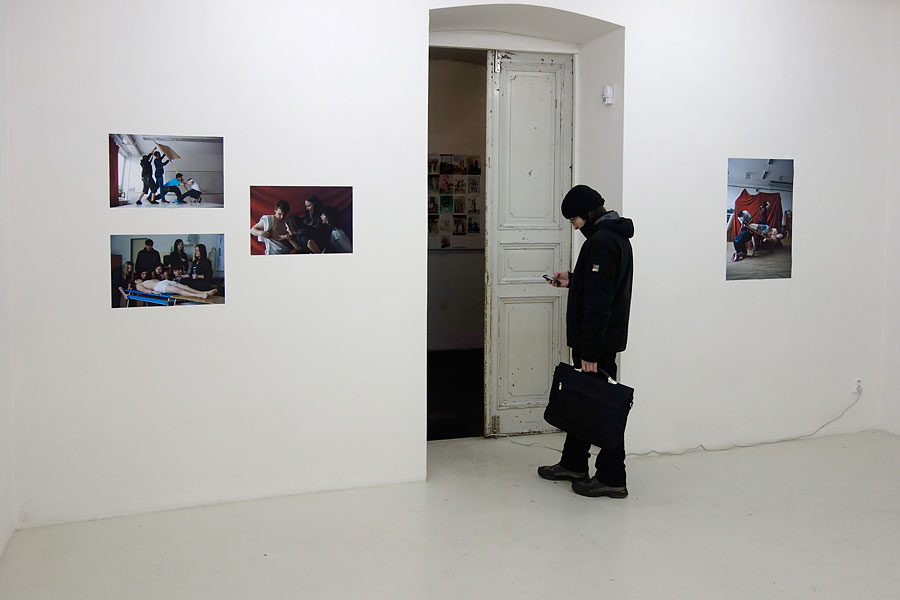
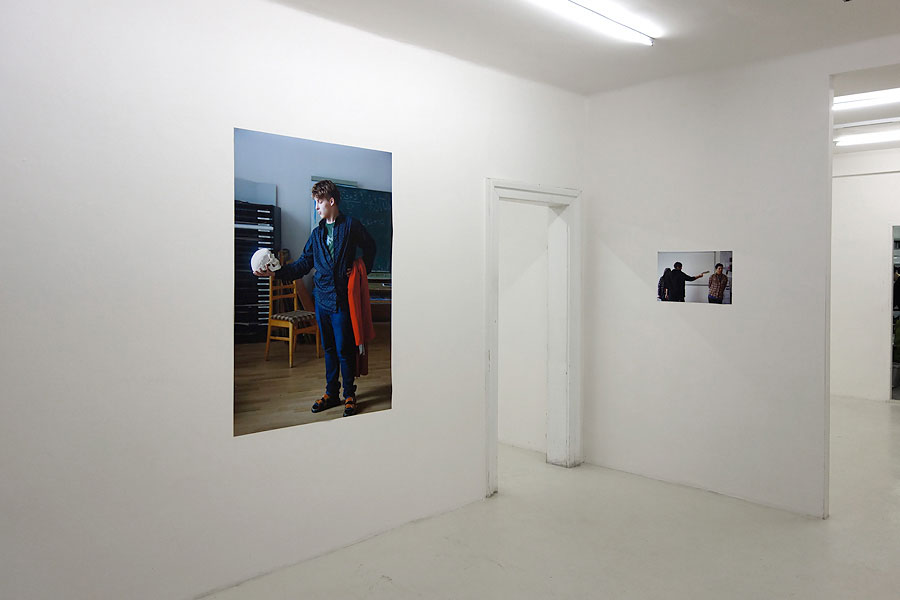
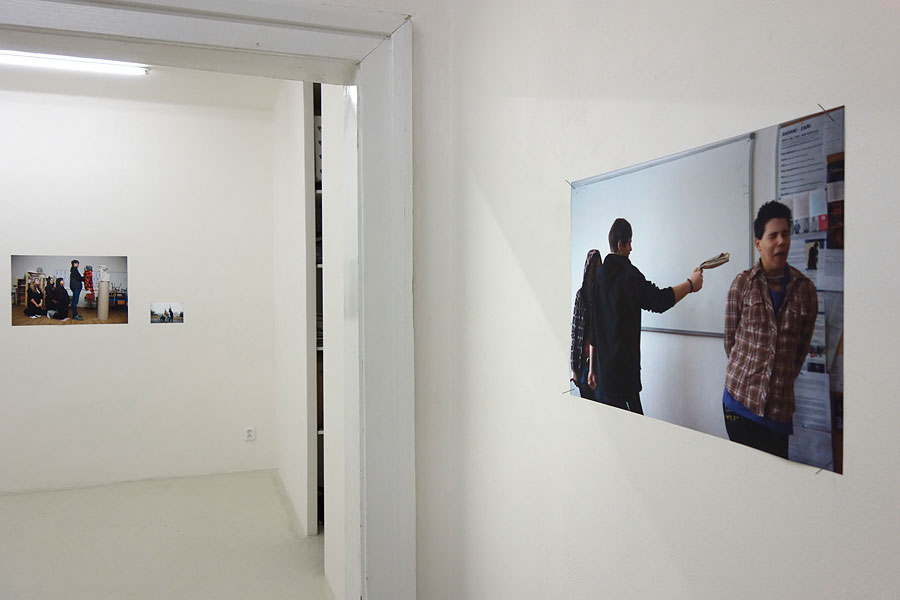
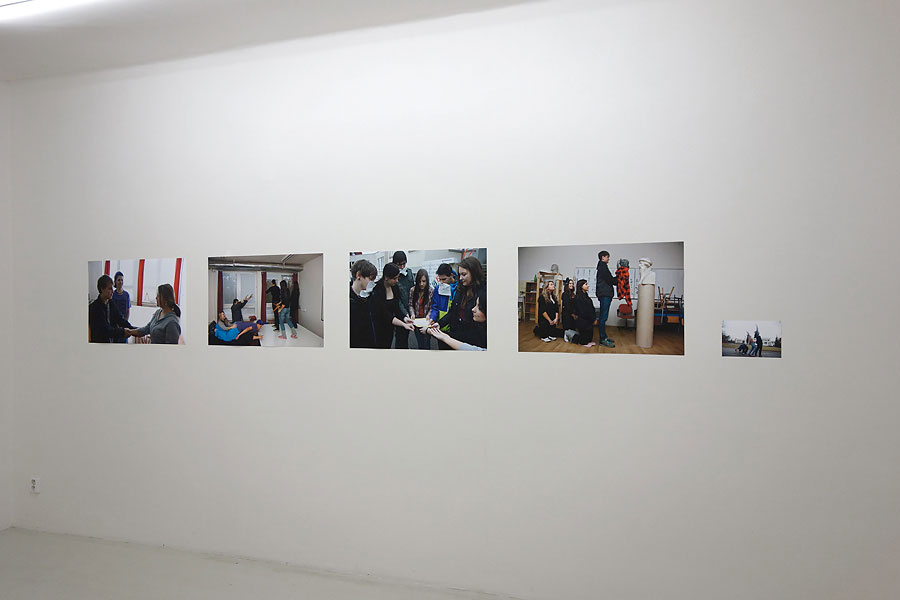
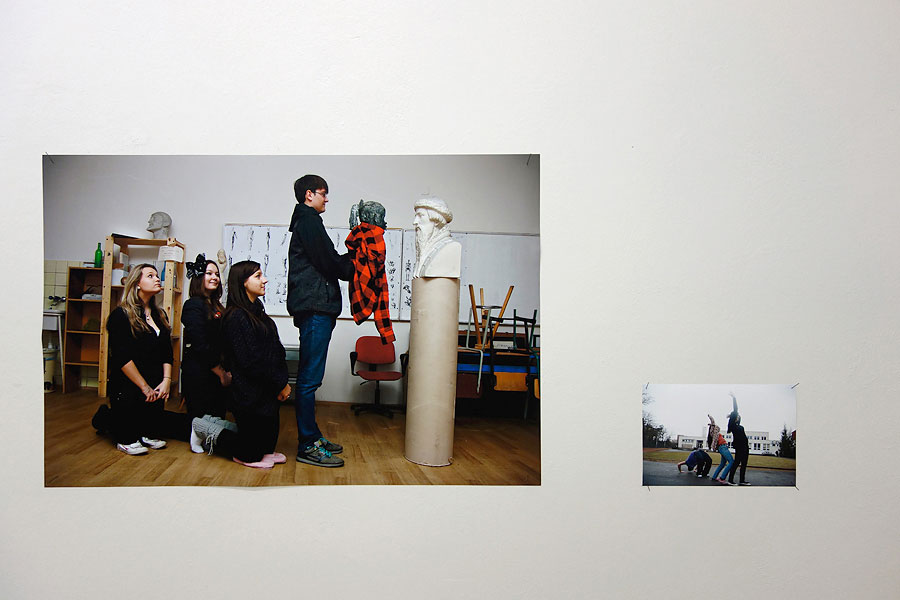
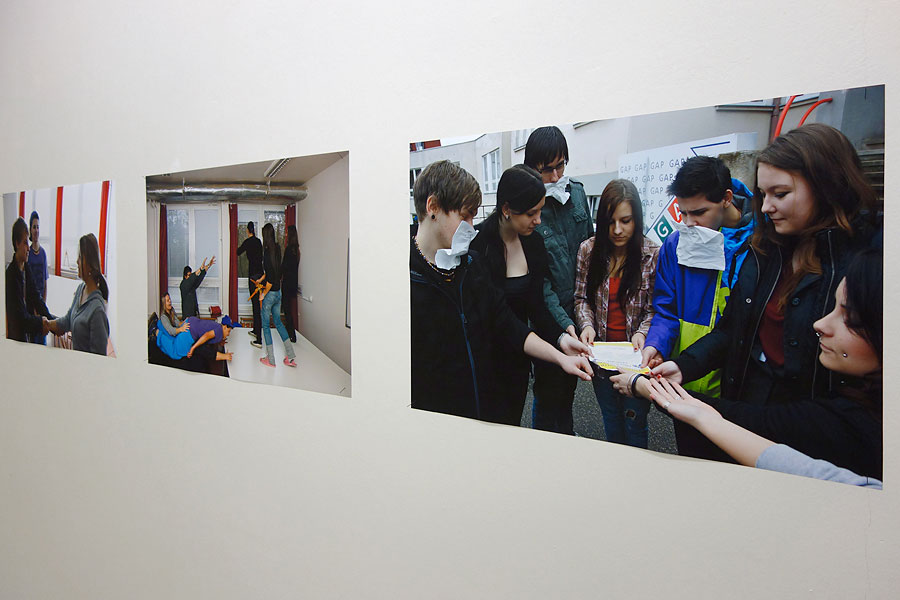
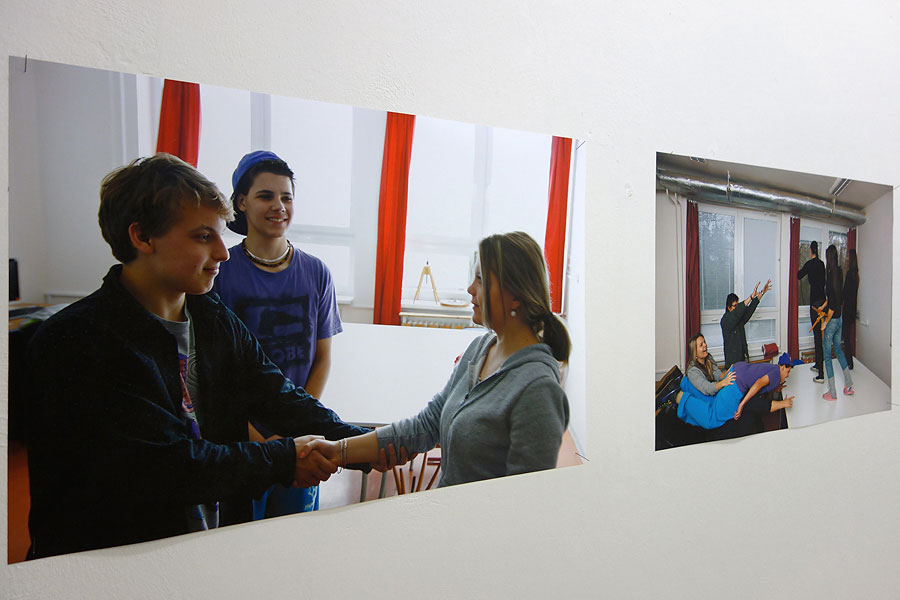
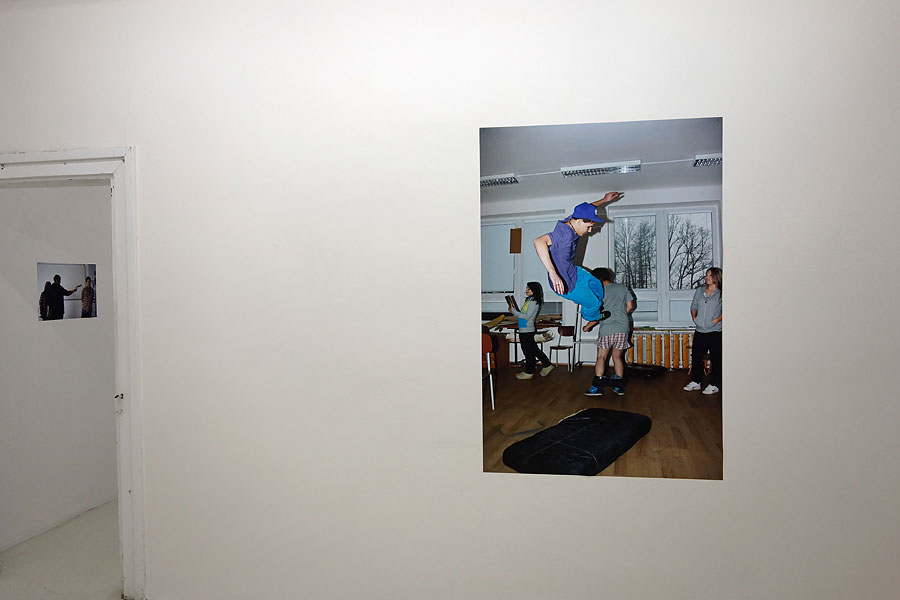
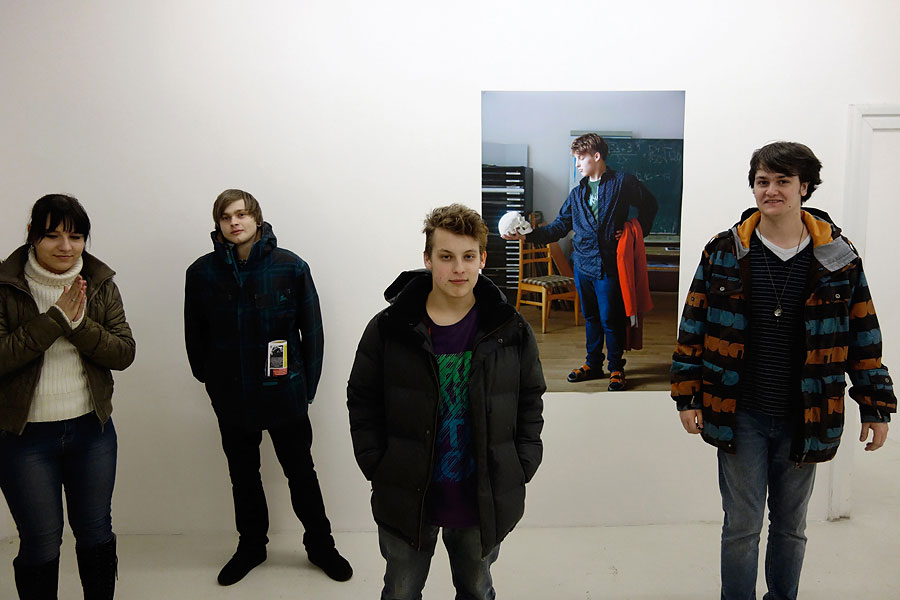
Few pages from exhibition catalog "Plesk Gap":
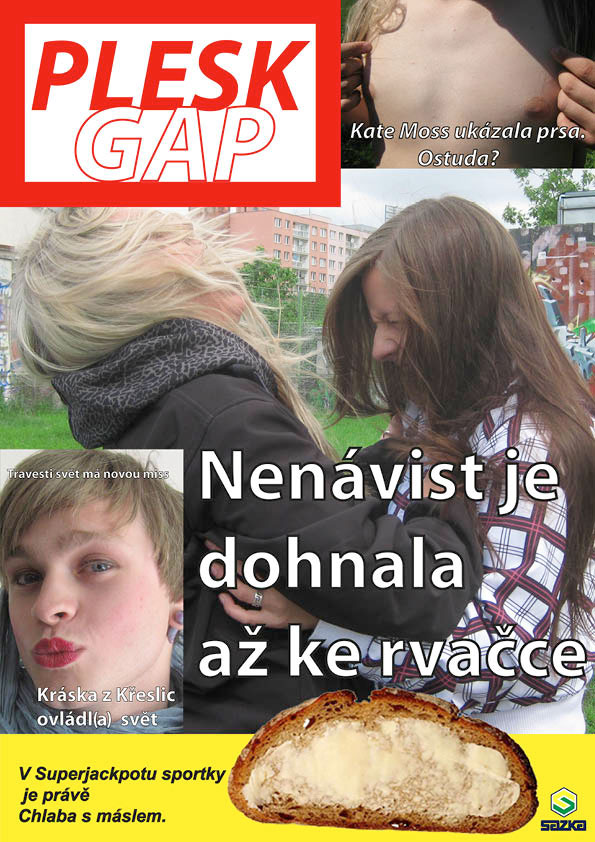
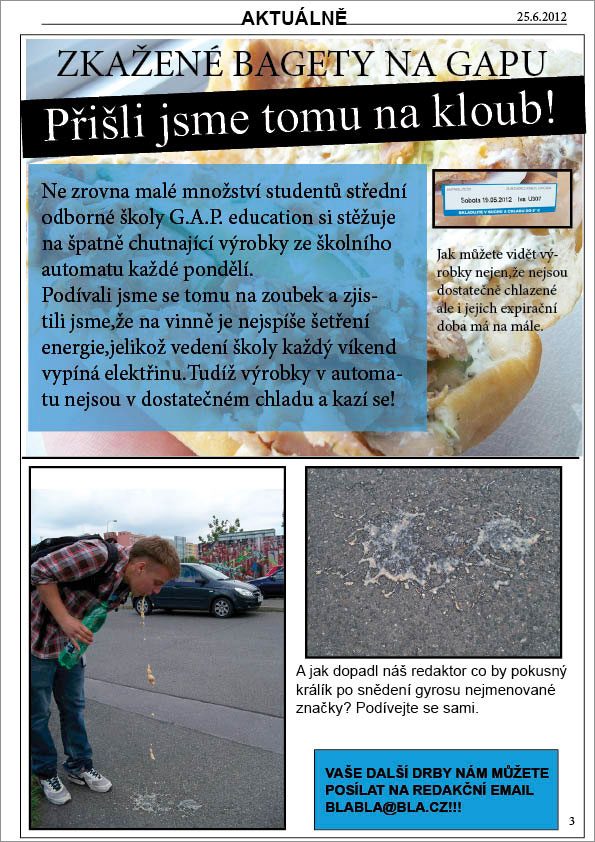
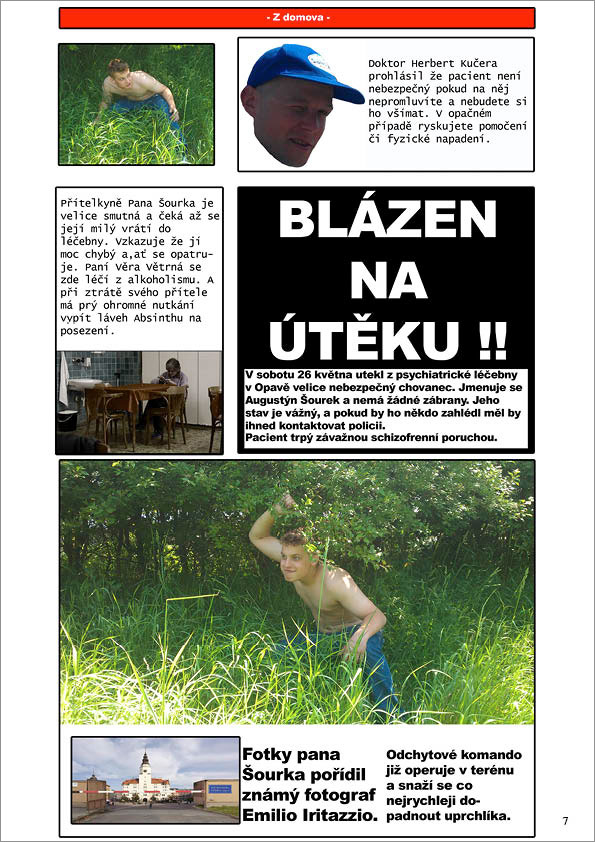
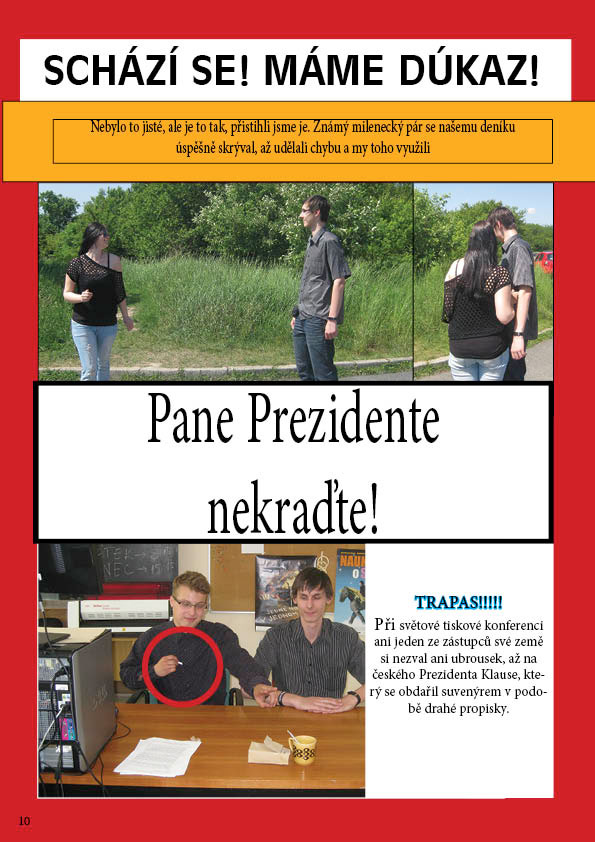
Students work - task was to make a parody of Czech yellow press newspapers "Blesk" and "Aha".
Full version of catalog HERE
Photographs from Photography Lessons HERE
The photographs in the Photography Lessons exhibition were created during a workshop for students from a high school in Prague. During the workshop students reconstructed scenes from photographs of very different sorts: reproductions of historic paintings and sculptures, iconic photojournalism images or anonymous photos downloaded from the internet. They chose the photos themselves. For the reconstructions they could only use objects from their immediate surroundings. Some of them look like memento shots of the running around of adolescents during a long recess break. Others have better composed scenes. In part of them we can recognise their model; and if not the exact work that the reconstruction draws on, then in parts the imaging scheme of classical paintings.
Gravlejs takes the shots amassed from the students, blows them up and hangs them in a gallery; as if they were not documentaries, but rather distinct images that he, in doing so, surrounds with an inappropriate aura.
Ivars Gravlejs (1979) is the bad boy of Czech photography. I would assert that this relates to his not being Czech.* He comes from a country east of ours: from Latvia. This is a country about which the majority of Czechs know so little that one postal worker tried to convince Gravlejs that he could not send a package there, because Latvia does not exist. The average Czech also confuses Latvia with Lithuania. I myself led by example in this case: by referring to him as a Lithuanian in my first annotation on this exhibition. Or in reverse: after one international football (soccer) game in Prague, they played the Lithuanian national anthem for the Latvian team.**
In one way or another we are witness to how artists, who are not of Czech origin and who hail from the former Soviet Union, enrich the Czech art scene through the most grotesque and subversive strategies. Somewhere in the background stands Viktor Pivovarov and Avděj Ter-Oganjan, each on their own island in the Czech sea. Ivars Gravlejs is close to Ter-Oganjan’s island: both in his choice of artistic objectives and tools, as well as personally.
Gravlejs‘ work is also so often tied to areas that do not fit the conventional understanding of photographic art, that this can certainly be no coincidence: pornography; first photo attempts by children; routine photo shots for provincial daily newspapers; photographs that come about when customers try out photo techniques in stores; self-promotional shots on social networks, etc. Such material – sometimes created, other times collected – is, for Gravlejs, the ideal laboratory test sample to be put under the microscope of ironic study of human behaviour. Through his exhibitions he shows the purpose of the photographs; what we want from them and what desire or hopes we pin on them. He also derives pleasure from using what is considered, for some reason or another, bad about the photographs.
In Photography Lessons Gravlejs once again, for the umpteenth time, comes back to the problem of relationships between photographs and education. In this case, it is the school, which is the exact spot, where one can find the „unfinished“ and partially „unformatted“ thoughts that interest him so much. This time he came to the school as a teacher and initiated a game, and (at the students‘ request) he also recorded it. The workshop’s main objective was to understand the chosen „images“ by imitating them. The decision to use collected materials came later. This was when Gravlejs found out how mysterious and „incorrect“ an impression the photos could give in an artistic institution. The photos are not even documentaries of „some event“ or a social project; nor are they traditionally staged photographs. And Gravlejs pays attention to their not being „either/or“, but meanwhile they are „this and that“. And together with their being exhibited, the question that Gravlejs loves so much is appropriate: Is it his exhibition? Or did he pull one over on the gallery-worker at Fotograf Gallery and set up an exhibition of work by a group of high school students? But the answer to the question could then seem inconclusive – yes and no, by them and on them.
Jiří Ptáček
* Due to his frequent use of hoax strategies, it is very well possible that Gravlejs is a Czech through and through and that he is just skilfully playing us for fools.
** 27 May 2008. Czech Republic: Latvia – 2:0.